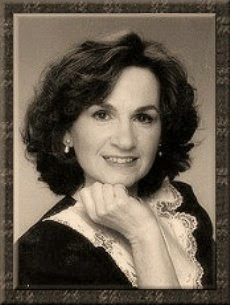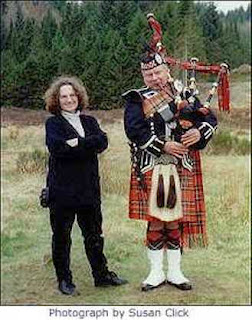
Welcome, I’m so glad to have this opportunity to chat with you. Can you share with my readers the essence of the story you’ve penned?
Hi Mirella. Thanks for inviting me. The story is essentially that of an American-Canadian lady doctor, who travels to India during the Victorian era, and while serving as a physician for the Rani of Jhansi, gets involved in the Indian Mutiny/Rebellion.
You’ve chosen a very interesting title. What inspired the title? What inspired the book?
I’m not sure what came first, the title or the plot? [laugh]. I’ve tried to construct an evocative title that would convey an image of the whole book, in a ‘nut-shell.’ Since, the doctor, sea travel to foreign lands and the mystery surrounding the sea-chest are all part of the story, those were some of the factors that inspired the title.
What inspired the book, may well be explained in a book itself! [laugh]. Well for starters, I’ve been interested in reading historic fiction from a very young age. I grew up on novels like Gulliver’s Travels, Robinson Crusoe among others, initially, and later enjoyed some of the more serious ones like War and Peace, Anna Karenina, Doctor Zhivago and such. However, it was the ones set in India (where I was born) during the British era, such as The Jewel in the Crown, The Far Pavilions, A Passage to India and similar classics, were the real inspiration for my novel.
What makes this book special to you?
I see this is a disguised question! [laugh]. It is one I am asked frequently. Most friends wish to know, “Is this a memoir or an autobiographical story?” I hate to disappoint, but must say that no, it is not. The story, however, is dear to my heart, for it is set with a backdrop of India’s struggle for freedom that took nearly one hundred years. The manuscript was looking more like a door-stopper and, thanks to the good advice of a British agent, I have subdivided it into a trilogy. Book I alone is over 400 pages! Therefore, to answer your question, the trilogy is indeed very special to me, as I am really re-telling a period of India’s history in an interesting format. That’s what historical fiction is all about. Isn’t it?
What makes this a book that people MUST read and WHY?
If someone is interested in learning more about India’s Independence pains, in an easier format than a textbook, then this would be a volume for them. I find history textbooks can be uninteresting, possibly because of their emphasis on names, dates, places, battle plans, number of casualties and other lengthy details. What’s missing is the human side of the events. US historical fiction writers can provide those omitted elements, which add sparkle to the narrative. Some writers, for instance like Pasternak in his famous Doctor Zhivago, weave romance into the story. This gets readers engrossed into the narrative and they relive the story’s period, in their mind anyway [laugh]. I’ve attempted to blend in all these factors and tried to construct an intriguing plot to make it an educational, as well as an interesting experience for the readers.
What sparks your creativity? Any tips to help others spark their own creativity?
Perhaps the best advice I can give on getting creative is to paraphrase that written by Stephen King in his famous text, On Writing, which is to “read a lot and write a lot.” By “reading a lot,” I believe he meant books set in the period we are writing about, which would get our imaginative mind working and dreaming up situations related to our plot and story. Actually, I find that a bit difficult to do, [laugh], for I am getting constantly diverted to other latest bestsellers far removed from and not even remotely related to the era of my work in progress. I’m having to frequently put away, or return back to the library, those new books and pick up again the dog-eared finely printed old historical masterpieces.
What has been the biggest stumbling block in your writing? Can you share some tips to help others get past similar problems?
My biggest hold-back from writing is finding the time to do it! Unlike some writers, in the same situation as me, who are also working full time, I am unable to snatch free moments during the day, say during lunch-time, in a doctor’s waiting room or on the commuter train, to scribble their chapters. I need a full block of at least a couple of hours and more to get going. On some evenings and even on weekends it is difficult for me to find this ‘writing-time.’ I suppose one way to overcome this difficulty is to say a firm “no” to family and friends’ suggestions for going out or socialising. Having a time-table, with writing time blocked out from other events, can also help.
Tell me about the most unusual things you have done to promote your book?
Well, having a “Blog-interview” with you is pretty unusual PR, isn’t it? [laugh]. I’ve read through most of the well known ‘how to’ books on this subject and am still confused about the best way to promote/market ones book. It seems, to me, that there isn’t one best way to do it. One has to use a number of techniques and it looks like every little bit would help. Apart from being interviewed by the local newspapers, having a book launch, and appearing at fairs and book sales events I haven’t done anything extraordinary yet. While I’m working on arranging book signings at some of the larger bookstores, I have contracted with Forword Magazine to have my book included as part of their collection to be showcased at the London Book Fair in April. We are also planning to be there. If anything it would be a holiday in London, to visit family and friends, as we haven’t been there for a while.
Each author is different in the way they create a work of fiction. Please describe for us how you plan or plot a story?
I do it “very carefully” [laugh]. Seriously, typically like an engineer, that I am, I am a firm believer in plans and schedules. This means preparing a plot outline and then developing it into chapter summaries, along with character lists and other useful details all collected together in a ‘data base.’ There are some excellent software available for one to do all this in an organized way. I have several, but the one I find quite useful is John Truby’s “Blockbuster.” Actually writing in this organized fashion was emphasized all along in the three-year Creative Writing Program I took at a nearby University. One useful technique I learned, in the Screenwriting course, was to break down the chapter into a scenes’ list and describe each scene in just a couple of sentences. Although this format is a must in writing movie scripts, I find it very useful also in our fiction writing.
Authors are very unique in the way they write, the tools they use, when they write, etc. Please describe a typical writing day for you? How do you organize your day?
As I said earlier, I need at least two hours to get going and do some writing. Hence, I try and block off time during the evenings and weekends for this activity. But [sigh] this is not always possible, for family, and friends as well, are important. They are our support group and we need to turn to them in times of our need for comfort and encouragement. So, I try to do the best I can, and find time to write sometimes late into the night.
What is your current work in progress?
I am presently working on Book II of my trilogy.
Can you tell us where to find more information about you and your books and how readers can reach you?
Yes, they can visit my website: http://home.cogeco.ca/~wrabbani or e-mail me at: wallyr20045@yahoo.ca. Also, my book on Amazon is part of their “Look inside the Book” program. Hence, readers may browse it there.
What would you like our readers to know about you and your writing?
I believe I’ve said enough about myself, above. However, I shouldn’t forget to mention the wonderful support and assistance I received in your critique group, Mirella. It was during the initial years that I was starting to write this novel and only through your excellent critiques and help that I was able to continue and arrive at this point of my writing journey. Thank you so very much Mirella.








.jpg)


